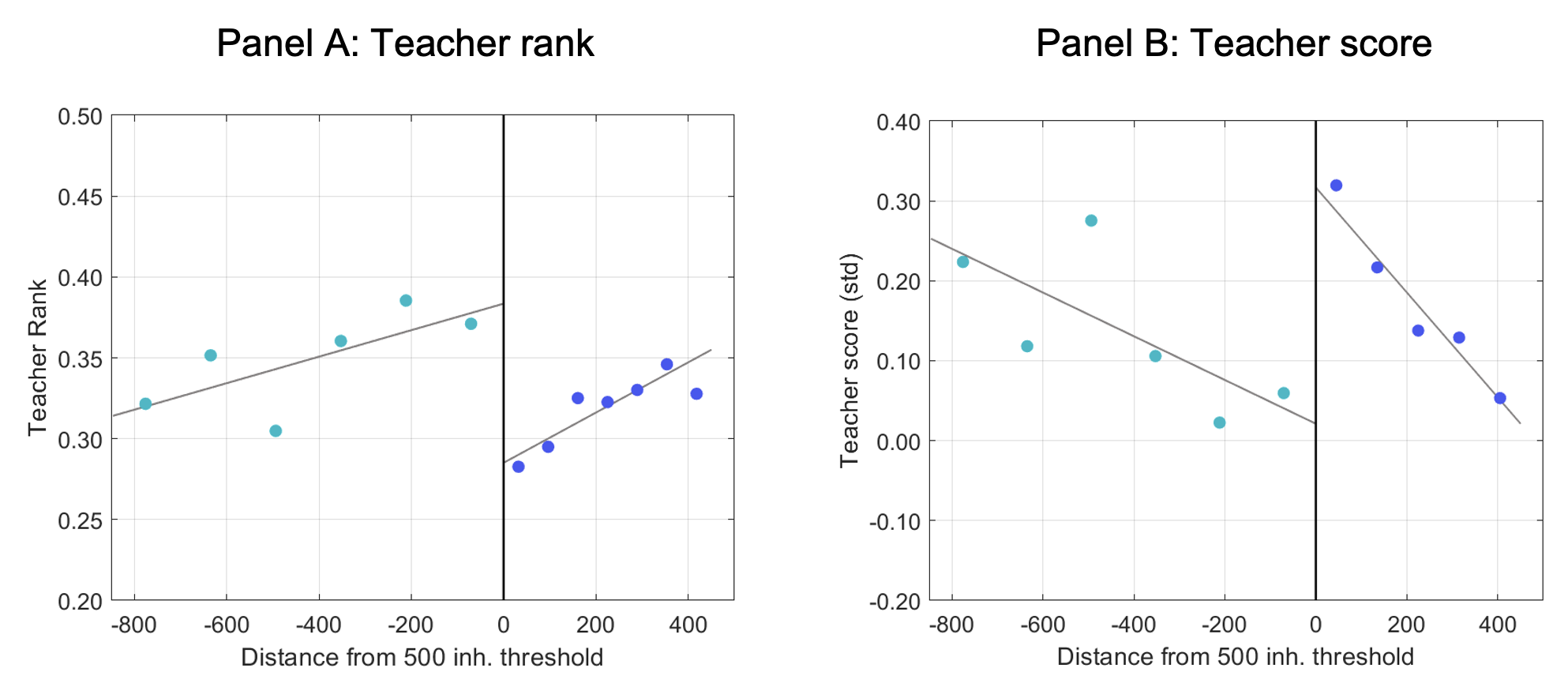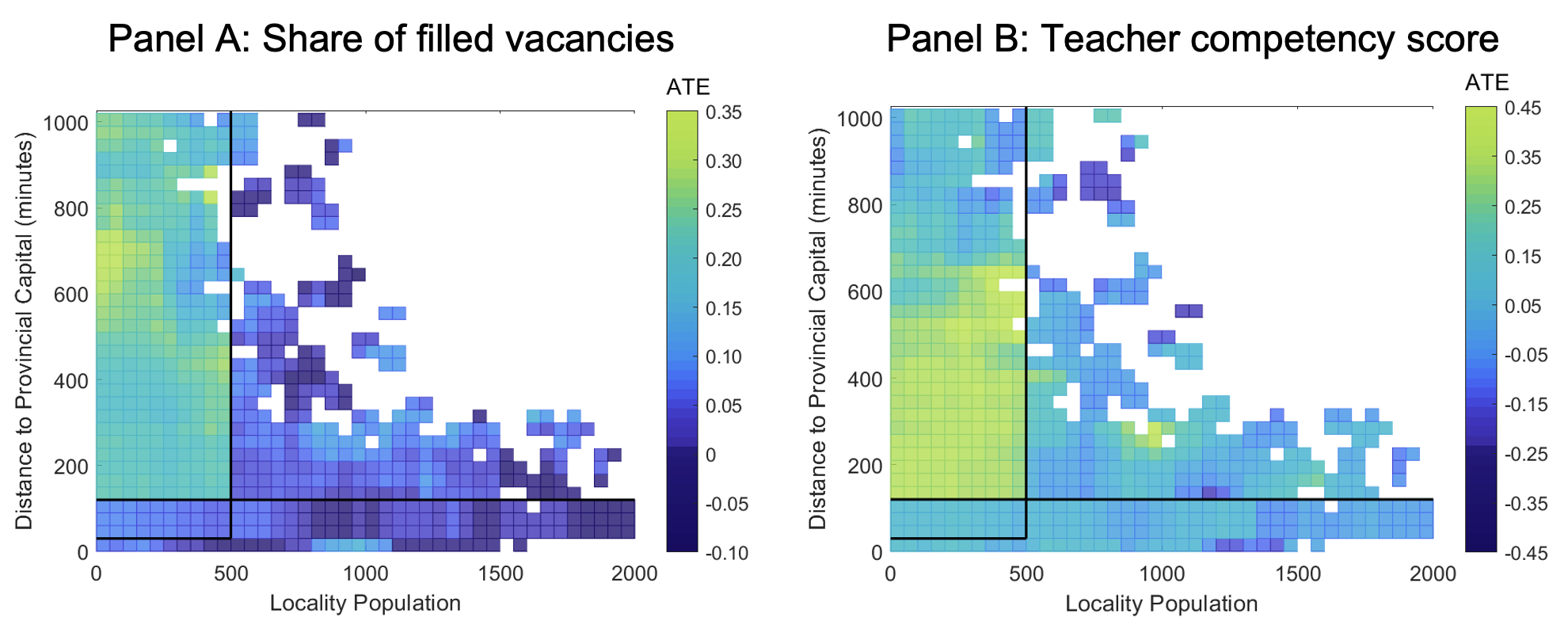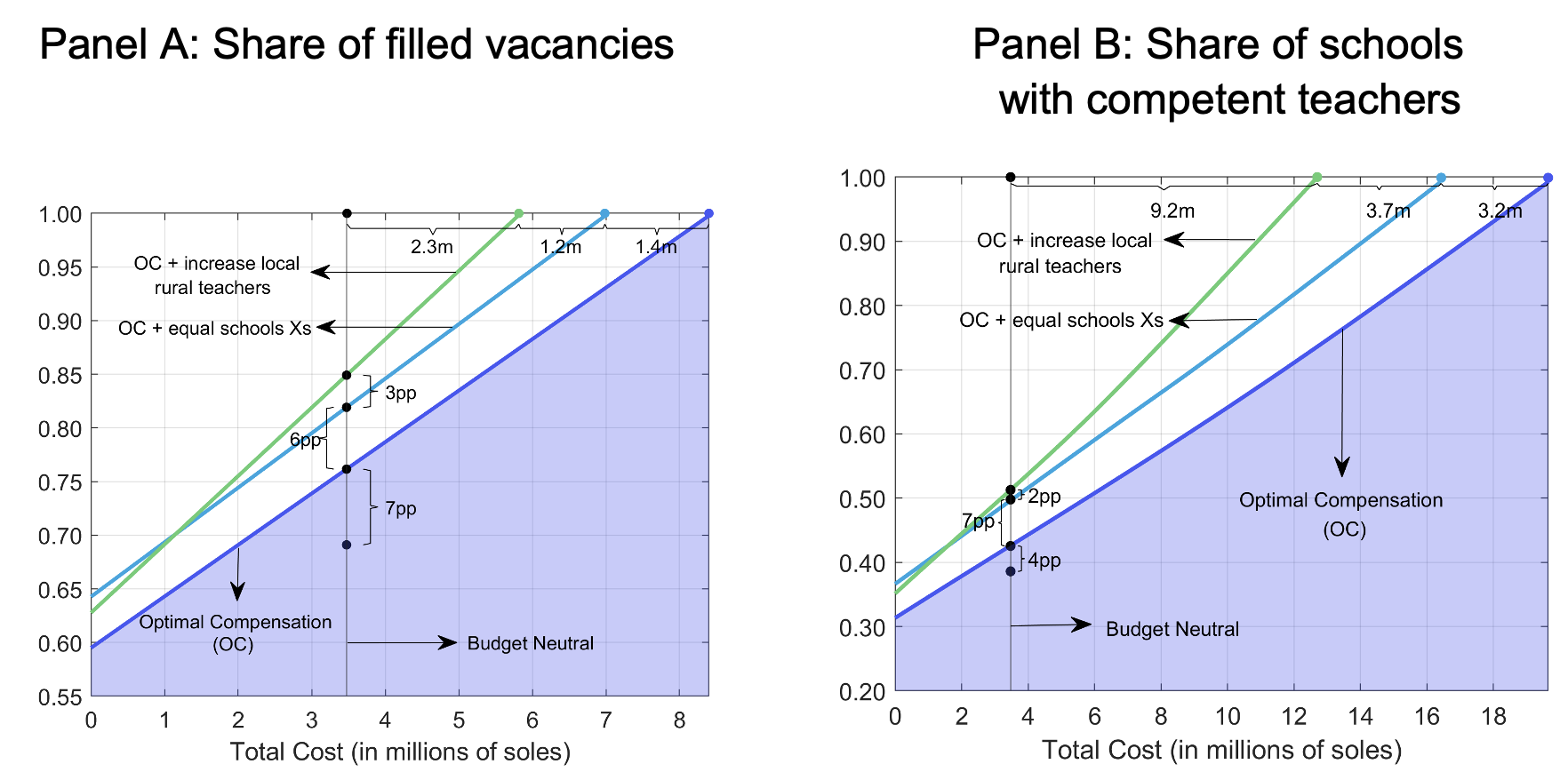
Wage policies that account for teacher preferences can achieve a more effective and equitable geographic allocation of teachers
Just as many school systems around the world use centralised mechanisms to assign students to schools, labour clearinghouses are increasingly used for entry-level positions in professional marketplaces (Roth 2002). Such mechanisms allow both sides of the market to express preferences over each other while a matching algorithm characterises their allocation. These settings may also be suitable to study the provision of services in the public sector, such as education, whereby collective wage bargaining often leads workers to sort on non-pecuniary aspects of employment (Rosen 1986).
Teachers are a central input to the education production function, and better teachers can have long-term effects on students’ labour market outcomes. In a recent study (Bobba, Ederer, Leon-Ciliotta, Neilson, and Nieddu 2021), we examine how inequality in the access to learning opportunities is amplified or reduced by policies that determine teacher compensation and, in turn, shape the geographic distribution of teacher quality. We study this question in the context of Peru, where the government uses a nation-wide matching platform to assign both existing and new teachers to school vacancies. Administrative data on school infrastructure and teacher qualifications (as measured by their performance in high-stakes subject competency tests) show large gaps between rural and urban schools, and these gaps persist when comparing student achievement.
Exploiting wage reforms for rural teachers
We exploit discrete jumps in teachers’ wages induced by a recent reform that assigns wage bonuses to teachers in rural public schools based on a coarse set of community attributes. We show causal evidence that higher wages significantly increase the demand for vacancies in rural locations. Importantly, these teachers are of much higher quality: they score 0.45 standard deviations higher in the national test, compared to their counterparts who choose lower paying positions of otherwise similar characteristics (see Figure 1).
Figure 1 Teacher wages and choices over job postings

Note: This figure shows how teachers’ preferences and quality vary based on the difference between the 500-inhabitants cutoff and the population of the community where the school is located. In Panel A the outcome variable is the rank in which a vacancy was chosen in the serial dictatorship mechanism (normalised so that it takes a value from zero to one), while Panel B uses the standardised score obtained in the centralised test by the newly assigned contract teacher. Each marker indicates the average of the outcome variable within each bin, defined following the IMSE-optimal evenly spaced method by Calonico et al. (2015). Solid lines represent the predictions from linear regressions estimated separately for observations to the left and to the right of the cutoff.
Increases in teacher compensation also led to significantly higher student academic achievement in math and language (0.3 and 0.35 standard deviations, respectively). This is only true for schools that had an available teaching position in the national recruitment drives we analyse, even though incumbent teachers were also paid more. This evidence suggests that there is no effort response of incumbent teachers, which mirrors recent findings that establish little or no effect of unconditional wage increases in contexts where most teachers are public servants with permanent contracts (de Ree et al. 2018).
Modelling teacher preferences
We then turn to estimate a flexible model of heterogeneous teacher preferences over wages and job attributes (Agarwal and Somaini 2020). To do this, we take advantage of the information on teachers’ revealed preferences, which we observe in the assignment system, along with detailed information on every school vacancy, teacher characteristics, and final assignments. The estimated model is able to replicate the main features of the data. In particular, our model reproduces the spatial sorting of teachers, the local effects around the wage discontinuity, as well as broader trends along the support of the variables that characterise rural areas in our context.
We can characterise the policy effects on teacher sorting away from the discontinuities generated by the eligibility cutoffs of the recent policy reform by comparing simulated assignment outcomes with and without the wage incentives currently in place. The evidence shows that while most of the effect of the wage policy on teacher quality happens close to the population threshold, its effect on the share of filled vacancies seems spatially concentrated in less desirable locations that are farther away from the cutoffs.
Figure 2 Policy effects on teacher sorting

Note: This figure uses simulated assignment data that is generated by running the serial dictatorship algorithm with predicted utilities computed from the estimated model as well as a randomly drawn set of taste shocks. For each outcome variable, we compute smoothed weighted averages over small and contiguous cells in the population and distance to provincial capital between the assignment simulated under the current policy and a counterfactual scenario with no wage bonuses. Panel A plots the smoothed average differences in the share of filled vacancies. Panel B plots the smoothed average differences in the standardised competency score at the vacancy level.
Are there better ways to determine teachers’ wages?
The estimated model shows that the current wage bonuses have been partly effective in reducing the large inequality in the allocation of teachers. However, we also show that the current policy is inefficient and not large enough to effectively undo the inequality of initial conditions that hard- to-staff schools and their communities face. We thus characterise alternative wage schedules that are consistent with two independent objectives: (i) filling all vacancies with any teacher irrespective of their quality, and (ii) recruiting in every school at least one teacher who is at least as qualified as the average teacher in urban areas.
By allowing schools to sequentially post higher wages until each policy objective is attained (Hatfield and Milgrom 2005), we show that a policy that sets compensation at each job posting using the information generated by the matching platform is more efficient and can help reduce structural inequality in access to learning opportunities. In comparison, a rigid system that ignores teacher preferences will indirectly reinforce such inequalities.
The optimal wage policy increases the share of filled vacancies by seven percentage points and the share of schools with higher quality teachers by four percentage points, at the same cost of the compensation scheme currently in place. Filling every job vacancy with the current stock of teachers would require twice the current budget (in terms of the total wage bill). However, shifting the supply of highly qualified teachers towards hard-to-staff schools is significantly more costly. Given the existing stock of teachers and schools, it would take six times the current budget to equalise access to teacher quality across the country.
Figure 3 Cost efficiency frontiers

Note: The figure plots the cost-efficiency frontiers derived by the matching-with-contract algorithm for both the objective of filling every vacancy with any teacher irrespective of quality (Panel A) and filling every school with a teacher who is at least as competent as the average teacher in urban areas (Panel B). The shaded area represents the set of feasible allocations. The purple lines show the optimal allocations under the current distribution of teachers and local amenities. The blue lines refer to a counterfactual scenario where all the locality/school characteristics are equalised across all the job postings throughout the country. Finally, the green lines refer to a different counterfactual scenario where we increase the local pool of applicants by 3% in a neighbourhood of the most disadvantaged communities.
Complementary policy solutions
We finally explore complementary policy levers beyond wage incentives for reducing spatial inequalities in the access to qualified teachers. If differences in school infrastructure were completely eliminated, the share of filled vacancies and the share of schools with higher quality teachers would rise at constant wage bills by an additional six and seven percentage points, respectively. We get larger increments in equity if, instead of equalising school infrastructure, the number of teachers from rural locations were to increase by just 3% with respect to the actual number of applicants. This targeted teacher training policy would lead to significant cost savings for policies that seek to eliminate inequality. Filling every job vacancy would cost 30% less and providing equal access to high quality teachers would cost 35% less than the optimal policy with the existing stock of teachers (see Figure 3).
Policy implications
Many firms routinely employ algorithmic pricing strategies that effectively account for demand and supply considerations in real time. In our research, we have shown that a centralised assignment mechanism for public-sector teachers can be used to leverage knowledge of teachers’ preferences of one side of the labour market in order to increase equity without fundamentally altering the efficiency of the market allocation. Our approach can be possibly applied to other public-sector settings that typically feature rigid wage profiles in order to incentivise spatial sorting toward jobs or locations where working conditions are less appealing.
References
Agarwal, N and P Somaini (2020), “Revealed Preference Analysis of School Choice Models”, Annual Review of Economics 12(1): 471–501.
Bobba, M, T Ederer, G Leon-Ciliotta, C Neilson and M G Nieddu (2021), “Teacher Compensation and Structural Inequality: Evidence from Centralized Teacher School Choice in Peru”, NBER Working Paper No. 29068.
de Ree, J, K Muralidharan, M Pradhan and H Rogers (2018), “Double for Nothing? Experimental Evidence on an Unconditional Teacher Salary Increase in Indonesia”, The Quarterly Journal of Economics 133(2): 993–1039.
Hatfield, J W and P R Milgrom (2005), “Matching with Contracts”, American Economic Review 95(4): 913–935.
Rosen, S (1986), “Prizes and Incentives in Elimination Tournaments”, American Economic Review 76(4): 701–715.
Roth, A E (2002), “The Economist as Engineer: Game Theory, Experimentation, and Computation as Tools for Design Economics”, Econometrica 70(4): 1341-1378.





